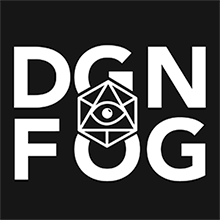Shadow Thieves
The Shadow Thieves was a secretive and powerful consortium of thieves' guild in western Faerûn that were headquartered in the Amnian city of Crimmor during the 15th century DR, having relocated from their base in Athkatla the century prior. They were formerly the most prominent thieves' guild in Waterdeep, but were routed from the city by the Masked Lady Lhestyn Arunsun. From the early-14th century onward they controlled many of the criminal operations along the Sword Coast, growing into one of the largest and most prosperous thieves guilds in all of Faerûn, with the ultimate goal of further increasing their collective influence and wealth.
Though the guild began strictly as a formal coalition between a group of Waterdhavian thieves, the guild has morphed into an elite organisation of thieves, spies and assassins, and through their deadly reputation and exotic poisons, the Shadows have practically come to rule the nation of Amn. Though honor among such an organization is generally dubious, they do adhere to one standard: contracts are met and agreements are kept. Failure to eliminate a mark means the life of the operative is also forfeit. The Shadow Thieves are a driving political force in Amn, often hired to assassinate Amnian nobility or even royalty.
The organization operated under two oaths, which were written by its first Grandmaster, following their exile from Waterdeep:
"The Shadow Thieves would never again be brought so low and disgraced as they were in their exile."
"They would take their vengeance upon the city of Waterdeep and the Arunsun family."
Activities
The Shadow Thieves were discreet in their activities, even in Amn where they were known by just about every citizen of the nation. Even the lower-ranked members, who earned their gold as beggars, cut-purses, thugs and fences followed these rules as they went about their daily duties. Even these minor operations allowed the Shadow Thieves to insert itself into the daily lives of Amnian citizens. Thus, a friendly game of chance run by a con artist gamer could lead to higher and higher stakes and a great take of gold for the agent and overall guild. Many citizens relied upon the manipulative and illicit services provided by the Shadow Thieves, especially in Amn, where business people became reliant on their protection rackets, money lenders and the enforcers and thugs they hired out. Politicians and government officials would often hire the guild's spies and burglars to obtain guarded knowledge, or plant false information. The multitude of traders and merchants in Amn received a myriad of unique mercantile opportunities provided by the guild's smugglers and pirates. The agents of the guild were just as ruthless as they were secretive. If a situation required the use of violence, they would only take prisoners if a person was deemed worthy of capture, i.e. they possessed arcane, political or financial power, or if the contract specified it.Outlook
Secrecy was the key to the immense success of the Shadow Thieves, an outlook that began with the ruling Shadow Council and spread to every officer, agent and member. Only the upper echelon of the organization knew the full complexities of their hierarchical structure, with individual members only aware of their immediate associates. Members worked exclusively with their known comrades so that could never implicate more than a handful of other thieves. Failure to maintain the secrecy of the Shadow Thieves would cost the guild money, an unacceptable occurrence that was readily punished by death, indeed one who earned a death mark from the Shadow Thieves would be made an example of, with the Shadow Thieves' sign left upon their corpse; a mask with a stiletto dagger threaded through the eye holes, a mark for one who has crossed the guild and paid the price. A Shadow Thief assassin leaves their mark. The Shadow Thieves highly valued loyalty, wealth and power. The inner circles maintained a familial loyalty, and any member who put the interests of the guild above their personal well-being in the face of danger would be handsomely rewarded provided they survive. Faerûnians outside the guild who possessed neither riches nor power were seen as expendable, mere tools that could be used to further the aims of the guild. If an outside thieves guild were seen to have some value, they would be brought into the Shadow Thieves either by persuasion or outright force. If they proved to be inept, weak of will or just poor of pocket, they were outright destroyed. The Shadows were also not above the use of indentured labour, and readily accepted children into their ranks to be raised as assassins, often accepting the children of poor families who could not afford to keep a child, buying unwanted babes in brothels, taking survivors from shipwrecks, and even accepting a babe in payment for a debt owed to the guild. In any case, once these children were taken by the guild they belonged to the guild and neither love nor money could restore them to their parents. Children taken into the guild were known as 'possedi' meaning 'bought' until they came of age and were accepted by their cell's Guildmaster as a fully-fledged assassin. They train their recruits from a young age, and have no problem killing them if they make a mistake. It seems to be an effective method. If a ranked member of the Shadow Thieves died, or was removed from power, the existing members of the same rank would put forth candidates and vote upon a successor. If the member left in good standing, their families would be fully taken care of.Abilities
Individual Shadow Thieves of Amn were skilled combatants, often performing acrobatic feats, evasive dodges, or if-needed, blind-fighting. In addition, they were experts of disguise, subterfuge and infiltration. In the rare instances where they were caught in illicit activities, they were well-equipped to talk their way out of capture and apprehension. Those capable of arcane or divine spellcasting often focused on the use of spells and magical items that enhanced the agent's stealth, such as invisibility.Organization
During the 14th century, the Shadow Thieves were ruled by the 8-person Shadow Council from the city of Athkatla, which in turn was led by the Grandmaster of Shadows. The guild was a strongly structured organization, which granted a level of protection to the organization as a whole.Anonymity
The power structure of the organization prevented individual members from possessing knowledge of the identity of any other Shadow Thieves save for their immediate superior and the agents who directly worked beneath them. This dynamic allowed members of varying ranks within the hierarchy to work on the same operation, even if in very different capacities. If an agent learned the identity or goals of a superior, they were often promoted to such a rank that they would work closely with that agent, as a reward for their investigative skills. If the discovery was proven to be a result of egregious error on behalf of the superior, that agent was punished and the uncovering Shadow Thief maintained their current rank.Hierarchy
Shades The Council divided the guilds area of influence into six territories, or "sects". Six of the council's eight members, referred to as Shades, served as the supreme commander of one of these regions, while the additional two councilors handled foreign intelligence and operations in outlying areas. Cloakmasters As of 1370 DR, the Shades were each aided by at least two Cloakmasters, whose domain consisted of a region or part of a city whose population did not exceed 10,000 individuals. While typically one Cloakmaster would oversee a rural area and another would administer a large city, larger metropolises were often be divvied up among several of these lieutenants. These officers only reported to their respective Shade and had no knowledge as to the identity of their peers, even if they worked within the same city. Guildmasters By the year 1372 DR, the number of Cloakmasters within the Shadow Thieves was lowered to 12, each of whom served by ten guildmasters, who autonymously carried out day-to-day activities within their respective branch of operations. For example, one guildmaster would lead all assassinations within their territory, another for burglary, extortion, blackmail, bounty hunting, information gathering, smuggling, piracy, racketeering, fencing, pick-pocketing, street begging, etc. Silhouettes The officers and agents of the Shadow Thieves were aided by the efforts of the Silhouettes, decoy guildmasters who would feign activities in cities and other areas of high activity. Their primary purpose was to attract attention from rival organizations, spies and city officials so that that guild activities could continue unimpeded. They could also contract outside groups or guilds for individual contracts. Assassin Assassins were the main bulk of the Shadow Thieves' forces, holding no command over their fellows unless under special dispensation by their Guildmaster or another superior, these agents worked alone or in small groups and almost always had been raised as possedi by the guild. Possedi Possedi was the term given to child recruits in the Shadow Thieves, having been bought or otherwise acquired by the guild and raised by them. The term possedi itself means 'bought' or 'possessed', a title to drive home that these children were in fact property of the guild; outside of that, their lives were meaningless. Possedi were often made to live communally in cramped quarters, which drove the formation of hierarchies and the young recruits were often incentivised to weed out the weak among their own, the only way they can survive the brutal process and prove themselves worthy is by surviving every test the Shadows throw at them, including killing their peers.Relationships
The greatest foes of the Shadow Thieves were the Lords of Waterdeep, as they were exiled by the rulers of the city in their early years. They held a near-equal animosity with the Arunsun magical family of Waterdeep for the exact same reason. Rival crime organizations, such as Xanathar's Thieves' Guild in Waterdeep and the Rundeen in Calimshan, offered obstruction to the Shadow Thieves' continued expansion. It was alleged the Shadow Thieves had some arrangement with the Council of Six, as the merchants of Waterdeep were the main trading enemies of Amn. In truth, the council was fearful of the Shadow Thieves knowing they were powerless to act against the expansive affiliation of thieves. With Grandmaster Rhinnom Dannihyr serving as one of the councilors on the governing body during the mid-1300's, a strong connection was formed between the powerful thieves guild and the government of Amn. By the late 1400's, House Dannihyr permanently held the seat of the Tessarch on the Council of Five and served as the secret masters of the Shadow Thieves.Areas of Operation
Each of the council's Shades oversaw an individual sect of Amn and the Shadow Thieves' outlying area of influence. The Shadow Council was headquartered in the Shadow House within Athkatla until the Godswar, but was later relocated to an unknown location.- Alandor Sect: Athkatla, Crimmor, Purskul, Keczulla, Amnwater and northern Amn.
- Caravan Sect: Riatavin, Tethyrian Highlands, Erlkazar.
- Frontier Sect: Esmeltaran, Eshpurta, Hillforts, central and eastern Amn.
- Sea's Sect: Imnescar, Murann, Trademeet, Velen, Dragon's Neck peninsula and southwestern Amn.
- Sword Sect: Zazesspur, Port Kir, Mosstone, Wealdath.
- Wine Sect: Myratma, Darromar, southern and central Tethyr.
- Another Shade led operations in Saerloon and gathered intelligence throughout the Heartlands, while another operated from Baldur's Gate and led reconnaissance in the Sword Coast as well as the group's efforts to consolidate their control of the Neverwintian underworld.
History
Formation The Shadow Thieves were formed as a singular guild by five charismatic rogues and assassins in the city of Waterdeep during the Year of the Raging Flame, 1255 DR. It functioned as any thieves' guild would for about 40 years, with the power of the group being shared among the families of the founders and their respective allies. In 1298 DR, Lhestyn Arunsun, who operated under the alias of the "Masked Lady", infiltrated the organization and killed four of the group's five founding members. The surviving senior guild-leader, Carzakh "Deepshadow" Halandir, and the remaining Shadow Thieves escaped from the City of Splendors and went into hiding. It was then that Grandmaster Deepshadow swore the two oaths that the Shadow Thieves operated by for decades. Before he could resettle the guild in the lands south of Waterdeep and the Sword Coast, a reorganization of the group's hierarchy was in order. Feeling they were previously too reliant on actual thieves and hired killers, appointed himself, a trusted assassin and an ally who possessed training in arcane spellcasting as the group's leaders known as "the Three". They began recruiting wizards, priests of Mask and other spellcasters to the guild, allowing them to gather information and influence their contacts by magical means. Growth By the early 14th century DR the Shadow Thieves had grown in power so much that the government of Amn was forced to publicly acknowledge their power within the nation. They began construction of their headquarters, the Shadow House, as well as their notorious training complex, the Assassins' Run, within the city of Athkatla in 1303 DR. While many thieves and killers flocked to the guild, the positions of power continued to be reserved for spellcasters. The former wizard Rhinnom Dannihyr quickly ascended within the ranks of the guild under the Three, and by 1311 DR had achieved the title of the guild's Master Spy. Within ten years, they had taken control of most of the organized criminal activity in Amn, and by 1341 DR had a reach on half the illicit activity reaching from the High Moor down to Athkatla. During the Ten Black Days of Eleint, they infiltrated the cities of Ithmong, Myratma and Zazesspur within the realm of Tethyr. They continued their expansion southward into Calimshan but met resistance with tradition-bound criminals of the desert realm. Reorganization During their expanse into the lands of Calimshan the inner circle of the Shadow Thieves increased its membership. The triumvirate known as the Three grew into the Shade Council, whose inaugural members were all assassins who worshiped the Lord of Murders, Bhaal. This ruling body was led by the newly-created title deemed the Guildmaster of Shadows, a post which was filled by Deepshadow. During the Time of Troubles, on Eleasis 13 in the Year of Shadows, 1358 DR, the clergy of Myrkul created a mass-scale death spell that killed all the Bhaal-faithful assassins of the Realms in preparation for the Banite ceremony known as the Stealing of Souls, where the Lord of Tyrants would harness the power of their collective life force. Deepshadow and the entire Shade Council were all killed in a single moment. To fill the vacuum of power, sweeping changes came over the Shadow Thieves and a number of lesser agents were promoted in order to fill positions and roles among the guild's upper echelon. Rhinnom Dannihyr absconded his post as Grandmaster of Spies of Athkatla and became the second Grandmaster of Shadows. While fending off a number of murder attempts he again changed the structure of the Shadow Thieves, and moved the organization's seat of power from the Shadow House in Athkatla to an "undisclosed location". With the heavy losses of their many assassins, the guild lost control of their holdings within Calimshan, leading to the Darkstalker Wars, which nearly completely locked the Shadow Thieves out of the realm. Domination of the West The longest-living member of the Shadow Thieves was the Cloakmaster of Dessarin, the necromancer Marune "The Masked". While Marune operated under Kerindra Lynnrenno, the Shade of Baldur's Gate, during the mid-14th century, he had been a key agent of the guild during their years operating in Waterdeep the century prior. In 1370 DR, he unveiled a grand scheme for the Shadow Thieves to attain an unassailable edge over the Lords of Waterdeep, by distributing slippers of shadowwalking to the guild's highest-ranking thieves. These agents could then effortlessly navigate Waterdeep's shadows, beyond the reach of the city's Lords. As Waterdeep fell on hard times around the Year of Wild Magic, 1372 DR, the Shadow Thieves got an opening they were quick to exploit. For over five years, the guild slowly came to dominate criminal activity in the Docks, Southern and Trades Wards while the North Ward of the city was at risk being infiltrated as well. However, this was not to last, and the group were once agai ousted from Waterdeep and left to brood their next attempt on the city. As of 1495 DR, the Shadows had undertaken a vicious campaign of subterfuge within the Neverwintian underworld which culminated in their near complete control over Neverwinter's thieves and hired killers, leaving any enterprising thief in the city with little choice but to join the Shadows.
Founding Date
1255 DR
Type
Secret, Brotherhood
Demonym
Shadow
Leader Title
Remove these ads. Join the Worldbuilders Guild










Comments